|
In my new novel, Foregone Conflict, Skyra, Lincoln, and the team find themselves in a strange world in which Neanderthals and humans both exist. The more they learn about the people of this world, the stranger things become. The people here are oddly fascinated by spiders. Not just any spiders, though. They are fascinated specifically by social spiders, an amazing group of spiders that live in huge colonies (instead of individually, like most spiders do). So, today, to celebrate the release of Foregone Conflict, I am featuring social spiders! What the heck are Social Spiders? It's important to remember that, as a rule, spiders are antisocial. They like to be alone. They hunt alone, they aggressively defend their webs, and many of them actually eat their own mates (which is very rude). Consider Shelob, the monstrous spider that attacks Frodo in The Lord of the Rings. Shelob hangs out alone in the caves of the Mountains of Shadows, waiting for foolish hobbits or orcs to wander too close. But there are some species of spiders, particularly in tropical areas with an abundance of insects, that have overcome these "lone wolf" tendencies and have adopted a social existence. Why? Because in certain circumstances, working together is better than working alone. Amazing facts about Social Spiders First, let's figure out how social spiders are different from social insects. We're all familiar with social insects like bees, wasps, and termites, which live in complex societies. These social insects often have distinct castes—each caste with distinct jobs, such as collecting food, or caring for the eggs and young, or defending the colony. There is even a queen, whose sole purpose is to lay eggs. These insects even go so far as to have different biological bodies for the members of each caste, and only a few of them ever have the opportunity to reproduce. Social spiders, on the other hand, do not have these distinct castes, and they do not have different biological body types. Every spider in a colony looks pretty much the same as all the others. Every spider can potentially reproduce. So, why do these spiders live in colonies instead of alone? What is the benefit of living in a group? Keep in mind that, when it comes to questions like these, it's all about mathematics. For example, one hypothesis is that living in a colony results in capturing, on average, more prey per spider. If each spider gets more food, then it is in the spiders' best interest to live in colonies. If each spider gets less food, then it is in the spiders' best interest to live alone. As it turns out, in certain circumstances, spider colonies work better than living alone. In certain circumstances, working together to build a much larger web results in more prey per spider. Amazingly, some social spiders make webs that are 25 feet (7.6 m) tall. Also, in certain circumstances, it is better to have large numbers of spiders to subdue and kill larger prey. While some social spiders live in group of only a few dozen, others live in groups of up to 50,000! Notice that I said this is beneficial in certain circumstances. Let's figure out what these certain circumstances are. First, it is thought that living in colonies helps if the average size of the prey animals in the area is unusually large. After all, it takes a lot of spiders to subdue a bat, a bird, or a large insect. In tropical areas, there are a lot of birds and bats, and a lot of jumbo insects. This is probably why most social spiders tend to live in tropical areas. Here's another idea—living in colonies helps if it rains a lot. Why? Because rain tends to destroy spider webs, and therefore the webs require more maintenance. More spiders equals more hands (or legs) to help out. Social spiders work together to build, maintain, and clean the massive web. Social spiders live mostly in areas that get a lot of rain. Then, of course, there is the actual size of the web. The larger the web, the more insects and other prey it will catch. In order for a 25-foot web to catch enough prey to support thousands of spiders, it must exist in an area that has a lot of insects. You guessed it... tropical areas. Check out this video of a social spider web. And then there is the obvious benefit of defending against predators. Let's say you are looking for a nice spider lunch. If you find a single spider, its pretty easy to snatch it and gobble it up. But if you find an entire army of thousands of social spiders, that's an entirely different challenge. In fact, you might end up being lunch for the spiders! Remember, social spiders are not like social insects. Let's look at how a social spider colony works. Instead of having well-defined castes, social spiders are more egalitarian. All spiders can do all things, and they are all capable of reproducing. The roles in spider colonies are more related to age and gender. And, believe it or not, scientists are starting to discover that these spiders sort themselves by "personality." Certain spiders are more likely to spend their time attacking predators, for example. Certain spiders are more likely to repair the webs, while others are more likely to take care of the colony's babies (each colony has a spider nursery). Astoundingly, more and more studies are showing that these roles are more likely due to individual spider personalities than to genetics. In other words, they actually choose what they want to do with their time! The social spider below, for example, which is battling an invading ant, probably has a more aggressive personality. Even though social spiders can be very successful, this lifestyle is quite rare among spiders. There are about 45,000 spider species world-wide, but only about 25 of those are social spiders. One last interesting tidbit. In 2013, in Santo Antonio da Platina, Brazil, a strong wind storm destroyed many of the area's social spider nests, tearing portions or entire nests free and hurling them into the air. This event led to a “spider rain” in which people in Santo Antonio da Platina observed spiders raining from the sky. So, Social Spiders deserve a place in the P.A.H.O.F. (Phat Animal Hall of Fame). FUN FACT: The word phat may have originated in the early 1980s. It is thought to have started as hip-hop slang, meaning "great or excellent." It is presumably an intentional misspelling of the word fat, kind of like the word boyz. In this case, fat is being used the way it has for centuries, as slang meaning ''rich,'' as in ''fat and happy." I will point out that some people think the word phat started out with a meaning related to admiration of a woman's form (such as, pretty hips and thighs). But... this is considered incorrect, and it is assumed that this meaning may have originated as an improvised explanation to women who felt insulted by the word. Regardless, it is mostly used to mean "great or excellent," and therefore phat is another way to say awesome! Photo Credits:
Social spiders attacking wasp - Reddit Social spider web #1 - UnbelievableFacts Large social spider colony - turdusprosopis on Flickr Social spiders eating grasshopper - ThinkJungle Social spider battling an ant - Graham Montgomery via Earth.com
0 Comments
Leave a Reply. |
Stan's Cogitations
Everyone needs a creative outlet. That's why I write. Archives
July 2024
|

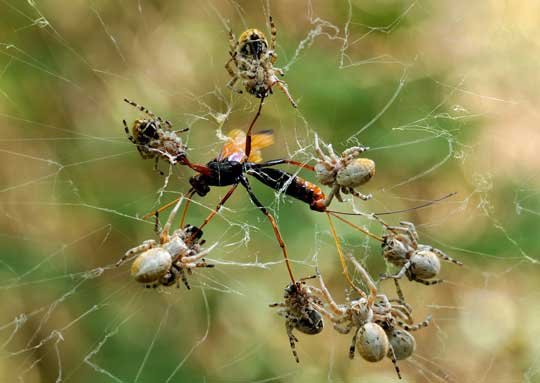
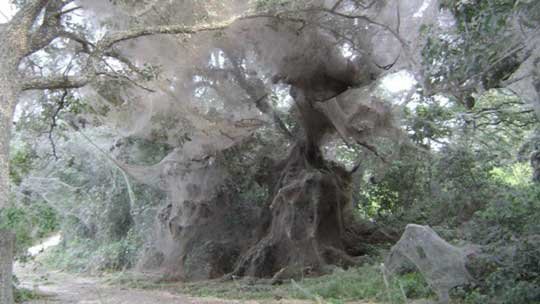
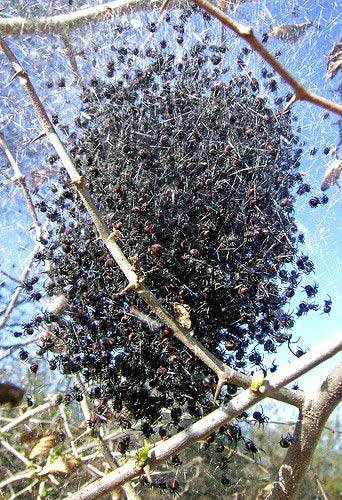
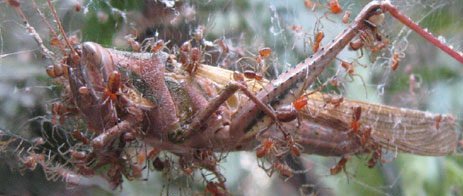
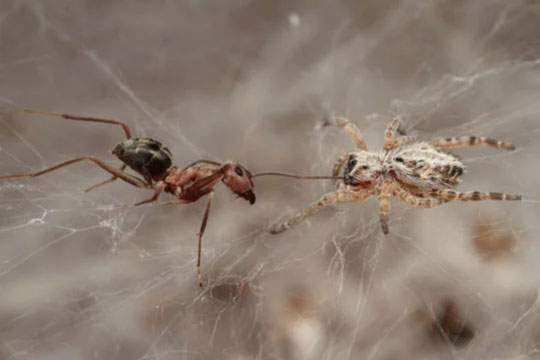
 RSS Feed
RSS Feed